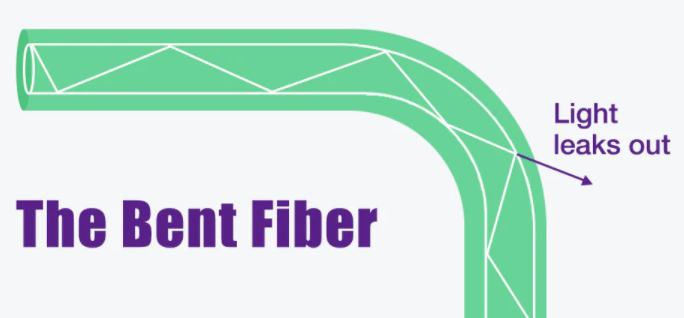او فو اوپٹیل فيبر کيبل ڪ.
ايڊري: شينينگ، ليئونينگ، چيي
رابطو شخص: منظمر Zhang
فون: 400-964-134
موبائل فون: 86 1390405338
و
2024-12-03 3214
Fiber Optic Cable Bend Radius: Ensuring Optimal Performance and Durability
Fiber optic cables have revolutionized communication by offering high-speed, low-loss transmission of data. However, these cables are susceptible to damage if not handled properly, particularly when it comes to bending. The bend radius refers to the minimum radius a cable can be bent without causing damage or significant signal loss. This article will explore the importance of controlling the bend radius of فيبر اوپটিڪ کيلs, the potential issues associated with improper bending, and best practices for maintaining optimal bend radius during installation and maintenance.

Prevention of Signal Loss
When فيبر اوپটিڪ کيلs are bent too tightly, the light signals traveling through them can be attenuated or scattered, leading to signal loss. This can degrade the quality of communication and, in extreme cases, cause complete signal failure.
Preservation of Cable Integrity
Tight bending can also cause physical damage to the cable, such as cracking or breaking of the fiber strands within the cable. Over time, this damage can accumulate, leading to premature cable failure.
Compliance with Industry Standards
Many industry standards and specifications outline the maximum bend radius that فيبر اوپটিڪ کيلs can withstand without experiencing detrimental effects. Adhering to these standards ensures that the cable installation meets the required performance levels.
Increased Attenuation
As mentioned earlier, tight bending can lead to increased attenuation, which reduces the strength of the light signal and can cause communication errors.
Cable Failure
Physical damage caused by improper bending can result in cable failure, requiring costly repairs and potential downtime.
Reduced Lifespan
Even if immediate damage is not visible, repeated improper bending can shorten the lifespan of the cable, leading to increased maintenance and replacement costs.
Use of Bend Radius Control Attachments
These attachments, such as U-shaped flanges or other cable management devices, help to maintain the minimum bend radius specified by the cable manufacturer.
Proper Cable Routing
www.adsscable.cn
Ensure that cables are routed in a way that avoids tight bends. Use cable trays, conduits, or other cable management systems to guide the cables along a smooth, gradual path.
Selection of Bend-Insensitive Cables
Bend-insensitive فيبر اوپটিڪ کيلs are designed to resist bending-related damage and allow for tighter bends without significant signal loss. Consider using these cables in applications where tight bending is unavoidable.
Training and Awareness
Provide training to installation personnel on the importance of bend radius control and the proper techniques for handling فيبر اوپটিڪ کيلs. Ensuring that everyone involved in the installation process understands the risks associated with improper bending can help to prevent damage and ensure long-term cable performance.
In conclusion, controlling the bend radius of فيبر اوپটিڪ کيلs is essential for ensuring optimal performance and durability. By adhering to best practices, such as using bend radius control attachments, proper cable routing, selecting bend-insensitive cables, and providing training and awareness, you can minimize the risk of damage and signal loss, and extend the lifespan of your فيبر اوپটিڪ کيل installations.
www.adsscable.cn
Fiber optic cable, bend radius, signal loss, cable integrity, industry standards, attenuation, cable failure, lifespan, bend-insensitive cables, cable management.